All Eyes are on the New FlashLite Magna LED Curing Light
The clinical performance of visible-light polymerized dental composites is greatly influenced by the quality of the light-curing unit used. Studies show mixed results when investigating the efficacy of composite polymerization with different LED curing units. Ideally, all of the monomer in dental composites should convert to polymer during the polymerization reaction. Complete polymerization is essential for obtaining ideal physical properties and clinical performance of resin restorations. For a thorough conversion of monomer to polymer, many characteristics of resin, as well as the curing light, play an integral role. The degree of polymerization of the photo-initiated material is dependent on the wavelength and intensity of light output from the curing unit, exposure time, size and location of the curing tip, and the composite shade, thickness, and composition.
This article focuses on the newest LED curing light, FlashLite Magna™ LED curing light (Discus Dental, Culver City, CA) (Figure 1) and highlights the new and improved features of the large 11-mm beam and the curing power output.
The new FlashLite Magna LED curing light shares many of the favorable characteristics restorative dentists favor. It is very light, ergonomic, cordless, small, easy to use, and has the same unique, recognizable design as its predecessor. The major difference between the FlashLite Magna LED curing light and its predecessor, the FlashLite™ 1401 LED curing light, is its much larger curing beam and tip (11 mm and 14.2 mm, respectively, vs 7.2 mm and 11.2 mm, respectively) (Figure 2). The author believes this to be a greatly advantageous characteristic of this new curing light. The beam is bigger than most other lights on the market and has an improved curing power of an average 1,500 mW/cm2.* This will allow more light, in the proper wavelength, to reach all areas of the light-activated restoration, thereby ensuring maximum polymerization and ultimately long-term clinical success.
Pictured are various clinical examples of using the light to cure a composite/sealant on a routine patient visit (Figure 3, Figure 4, Figure 5, Figure 6, Figure 7, Figure 8). The device is easy to use, light, and is able to negotiate even the smallest mouths or patients with limited openings.
Conclusion
A common clinical failure in adhesive dentistry can be attributed to partial or incomplete polymerization, which can increase water absorption and solubility of un-reacted monomers, negatively affecting the longevity and the esthetics of the restoration. The large beam of the FlashLite Magna LED curing light and its high-output can minimize the occurrence of this type of clinical failure.
The ease of clinical use and handling of this LED light and its newest feature, the large beam, make it a great choice to consider as part of your clinical armamentarium.
This review article was written by Michael B. Ferguson, DMD. Dr. Ferguson is an associate clinical professor in the Department of Prosthodontics at New York University College of Dentistry, New York, New York.
For more information contact:
Discus Dental
Phone: 800-422-9448
Web: discusdental.com
*plus or minus 400 mW/cm2
DISCLAIMER
The preceding material was provided by the manufacturer. The statements and opinions contained therein are solely those of the manufacturer and not of the editors, publisher, or the Editorial Board of Inside Dentistry. The preceding is not a warranty, endorsement, or approval for theaforementioned products or services or their effectiveness, quality, or safety on the part of Inside Dentistry or AEGIS Communications. The publisher disclaims responsibility for any injury to persons or property resulting from any ideas or products referred to in the preceding material.
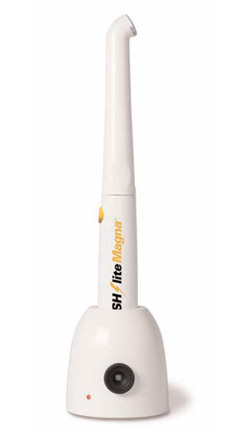 | |
| Figure 1 The FlashLite Magna LED Curing Light. | |
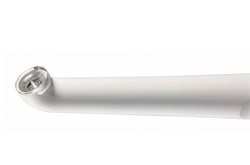 | 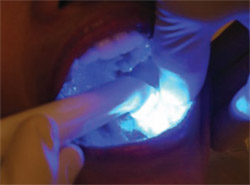 |
| Figure 2 Close up of the bigger 11-mm beam. | Figure 3 Curing a posterior sealant. |
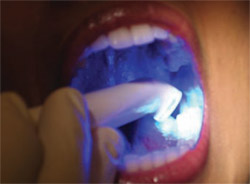 | 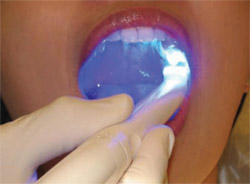 |
| Figure 4 Curing in the mandibular posterior. | Figure 5 Curing in the maxillary posterior. |
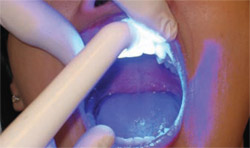 | 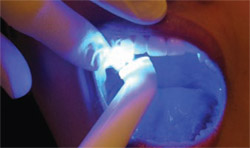 |
| Figure 6 Curing in the maxillary anterior. | Figure 7 Curing the incisal edge. |
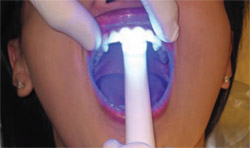 | |
| Figure 8 Light used for trans-illumination. |



